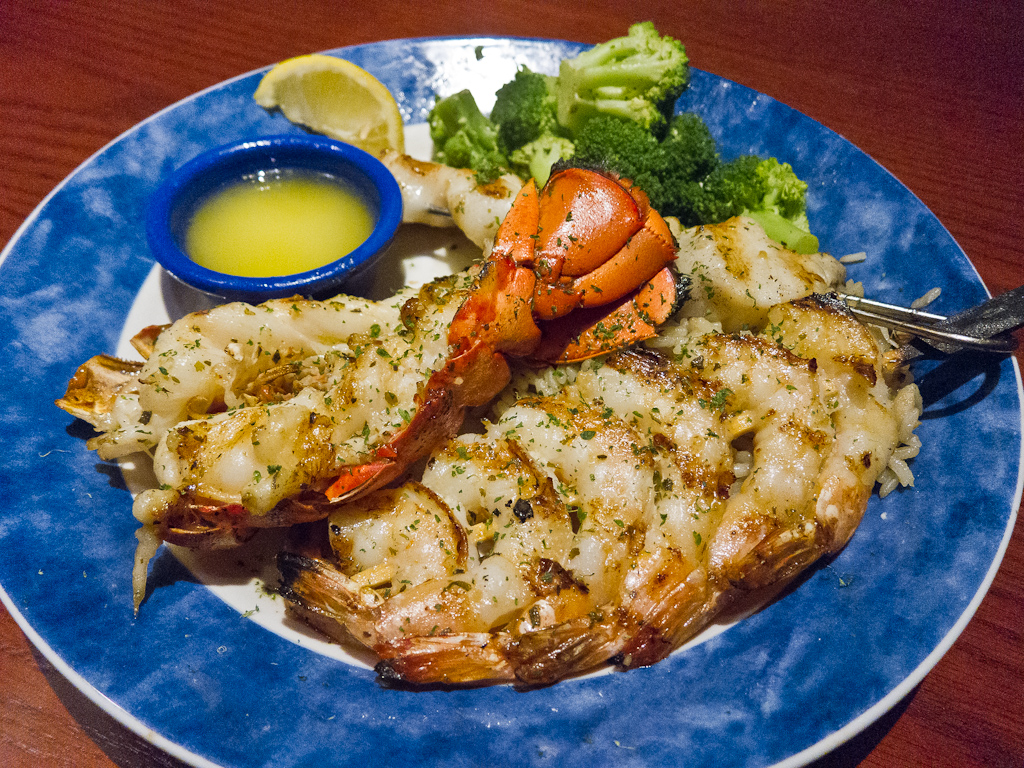
Red Lobster has been struggling. Once a popular seafood restaurant and a favorite casual dining spot for many Americans, it remains beloved by many. People still remember the Cheddar Bay Biscuits and affordable meals. However, financial issues have hit the company hard. Ultimately, it filed for bankruptcy protection, and everyone heard about it.
This wasn’t an overnight disaster; it stemmed from long-standing challenges. Promotions that allowed customers to enjoy themselves freely became too popular. Changes in customer preferences also played a role, and economic issues further exacerbated the pressure. Red Lobster was facing multiple challenges simultaneously.
But the story doesn’t end there. Just a few months after things seemed at their worst, the chain restaurant managed to turn things around. It secured new funding and developed a new growth strategy. Let’s take a look back at the major events that led to the financial issues and see how it managed to pull itself back from the brink.

Many believe that the return of the Ultimate All-You-Can-Eat Shrimp promotion sparked the issues. The promotion was relaunched in 2023 and received a strong customer response. However, making this offer permanent proved extremely costly, ultimately placing a significant financial burden on Red Lobster’s overall operations.
Former CEO Jonathan Tibbs addressed these issues. He stated that the Ultimate All-You-Can-Eat Shrimp promotion cost the company $11 million. This highlights the risks of offering unlimited food. Customers enjoy eating large quantities at a fixed low price, but what was intended as a strategy to please customers ended up draining the company’s finances. This loss exacerbated Red Lobster’s $22 million loss reported in 2023, setting the stage for difficult decisions moving forward.

Actually, the shrimp issue in 2023 wasn’t the first time something like this happened. Before that, an unlimited seafood promotion also caused serious financial problems for the company, and that happened in 2003. At the time, they launched a promotion called “Endless Crab,” promising customers unlimited crab legs. However, this attempt quickly turned into a financial disaster.
The company lost approximately $3.3 million, with the losses occurring within just seven weeks. The lessons learned from this costly mistake were not fully absorbed. This led to a similar failure two decades later, this time targeting shrimp products.
Repeating the same mistakes raises questions: How did the company plan its promotional campaigns? Did they adequately assess the risks? Losing millions of dollars may serve as a lesson, but repeating the same mistakes indicates deeper issues, such as a lack of understanding of customers’ true needs and an inability to effectively control the costs of promotional campaigns.

The primary issue with the “unlimited crab” and “seemingly unlimited shrimp” offerings was a miscalculation in demand. The company failed to accurately estimate the amount of food customers would consume. When offering unlimited options, customers’ actual consumption far exceeded expectations. This was the fundamental mistake they made.
Additionally, seafood prices were high at the time, with crab prices particularly expensive. The pricing strategy assumed customers would only order small portions. However, in reality, most customers ordered three portions or more. Each additional portion resulted in a loss.This led to a rapid deterioration of the financial situation, with funds depleting at an extremely fast rate.
The combination of high consumption and high costs dealt a fatal blow to the company. Promotional activities failed to generate profits, transforming from a potential attraction into a major issue. This significant burden quickly depleted Red Lobster’s financial resources.

In addition to ingredient costs, Endless Crab faces other challenges. Crab takes a long time to cook and eat, which has led to some unexpected issues. Specifically, slower dining speeds result in lower table turnover rates. This reduces the number of customers the restaurant can serve, and decreased efficiency may lead to lower revenue. It may also cause longer wait times for customers, but the primary loss stems from ingredient costs.
Food waste is also a significant issue. A Reddit user reported that the restaurant discards crabs daily during promotional periods. Customers reportedly leave food on their plates but continue ordering, further exacerbating the economic losses caused by food waste.

In 2003, the “endless crab” incident led stakeholders to lose confidence in management’s capabilities. They questioned management’s ability to formulate promotional strategies, prompting them to sell off company shares. This demonstrates how internal issues can influence market perceptions.
The negative sentiment also spread to the parent company, which was owned by Darden Restaurants at the time. This impact caused Darden Restaurants’ value to plummet, nearly reducing it by $500 million. This demonstrates that a failed promotion can have severe consequences and highlights the stakes involved in this incident.
In May 2024, Red Lobster officially filed for Chapter 11 bankruptcy protection. This clearly indicates that its financial situation has become extremely dire. The company urgently needs to implement major reforms to maintain operations, marking the inevitability of a large-scale restructuring.
As part of the bankruptcy proceedings, Red Lobster was forced to close over 90 stores. While these closures were difficult, they were necessary. The aim is to streamline operations, reduce costs, and lay the groundwork for the stable development of future business operations.

As Red Lobster Restaurant was facing financial difficulties, Fortress Investment Group LLC successfully acquired the Red Lobster Restaurant. The group specializes in resolving complex financial issues.
The group directly acquired the Red Lobster brand. The acquisition was completed through a new company now named RL Investors Holdings LLC. This structure provides a framework for injecting new capital while bringing fresh leadership to the struggling chain brand.
Fortress Investment Group provided over $60 million in financial support. This financial backing was crucial at the time, effectively stabilizing the company’s financial situation, swiftly resolving historical debt issues, and providing essential funds for daily operations. This funding was a lifeline for Red Lobster.
Financial assistance and restructuring measures were swiftly implemented. The bankruptcy proceedings for Red Lobster progressed rapidly, faster than those of some other large companies that filed for bankruptcy.
On September 16, 2024, Red Lobster officially exited Chapter 11 bankruptcy protection. This marks a crucial step forward for the company, signifying the successful completion of its financial restructuring. Under court supervision, operational issues have been resolved, and the company is now prepared to resume operations under new ownership. Compared to the turbulent period several months ago, this rescue not only provided swift assistance but also laid the groundwork for the future.

The menu redesign is part of a strategic initiative, and we are currently proceeding cautiously with the streamlining and optimization of our dish offerings. Beloved classic dishes will be making a comeback. Fried corn fritters (Hush Puppies) will soon be returning to the menu.
Lobster Pappardelle has also been reintroduced to the menu, but the permanently unlimited shrimp platter has been completely discontinued. This move addresses a major cash flow issue that was causing financial problems. Portion control for all dishes is now a priority. Even popular events like Lobster Fest reflect this principle, as the company has learned from past costly mistakes.
The Lobster Festival is returning under the name “The Greatest Lobster Festival Ever.” This demonstrates the wise use of existing events. The goal is to continue attracting customers while maintaining profitability.

To ensure future growth, Red Lobster has set its sights on the younger demographic. This group has expressed a desire for a different dining experience. They place a high value on food quality and ambiance. As a result, the CEO mentioned plans to upgrade the restaurant’s interior, an effort aimed at modernizing the overall style and atmosphere of the restaurant. They have found that as customer habits evolve, restaurants need to change their business strategies.
The chain brand is steadily advancing its reforms, and time will tell whether these measures are sufficient. Other chain brands are also seeking ways to transform themselves, with the goal of consolidating their brand positions and becoming the first choice for consumers when purchasing seafood.
Related posts:
This Chain Is Bringing Back An All-You-Can-Eat Deal (With Shrimp) That’s Cheaper Than Red Lobster’s
How Much Did Red Lobster Lose On Endless Crab?
Struggling Seafood Chains Making Comeback




